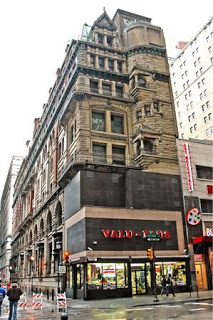Well, at the moment nothing has been officially "said," at least regarding what 1.5M Philadelphians should do on September 25th. However, on Thursday, the Secret Service wanted to make it clear that they did not order businesses to close or suggest running limited rail service.
With growing frustrations amongst residents, those in City Hall have become visibly frustrated themselves. It's understandable but also unacceptable. As leaders of the nation's fifth largest city, they should not only be versed in their own security protocol, but also in working seamlessly with Federal and Foreign security administrations.
If the Secret Service's comments are any indication of how City Hall should have been behaving over the past 11 months, it seems City Hall should have stepped aside and let the professionals iron out the details.
 |
| No thanks! I'll be in Rehoboth for a two-dude wedding celebrating America's definition of Family. |
But we live in #becausePhiladelphia. Everyone has an "expert" opinion on our city's unique quirks, and not one of those opinions is unanimous. Like a 15 year-old who's sure he knows how to drive, City Hall snuck his dad's Cadillac out of the garage and made a mess all over town.
Instead of being faced with 1.5 frustrated Philadelphians not knowing what we should do in two months, City Hall is now being scolded for running over the neighbor's petunias and leaving two 40s in the backseat of the Caddy, and the Secret Service is faced with the fallout of rogue speculation run amuck because City Hall failed to sit there and behave.
Perhaps the Secret Service didn't know what it was getting into with #becausePhiladelphia.
With a shit-show imminent, we can at least be sure we won't be paying for it. At least not most of it. Because of a lawsuit that arose from the city's last Papal Visit, it appears the archdiocese will be covering the cost. Whether that cost is the projected $45M, or more, it still won't cover the collateral fallout of the city's ineptitude. And we only have Mayor Nutter and City Council to thank for that.
With no firm word on road closures and uncertainty around how to purchase transpasses, cars will be unknowingly towed, hourly employees will lose pay, and residents will find themselves stranded. Ironically, the Vatican won't be covering the city's humanitarian toll.






















